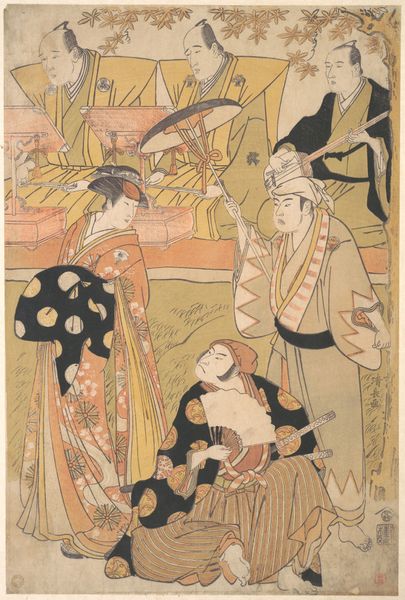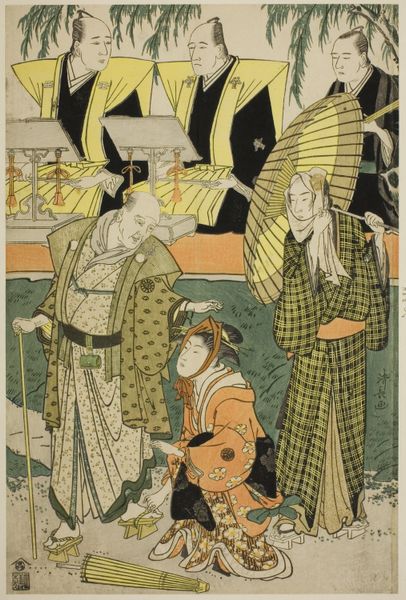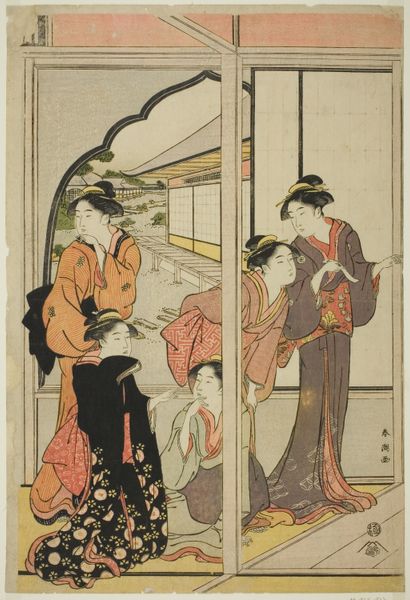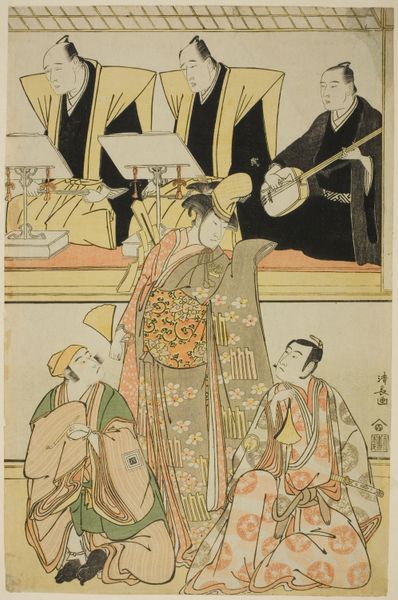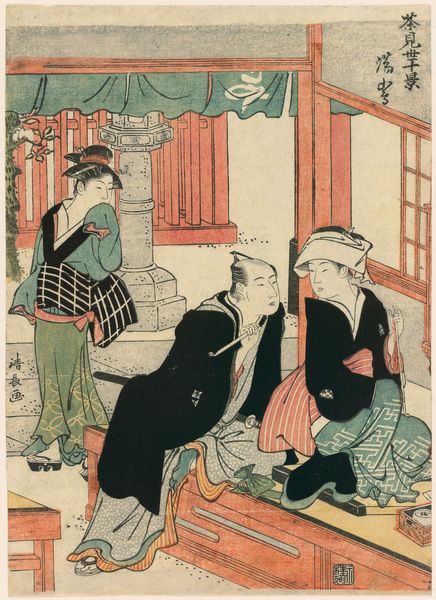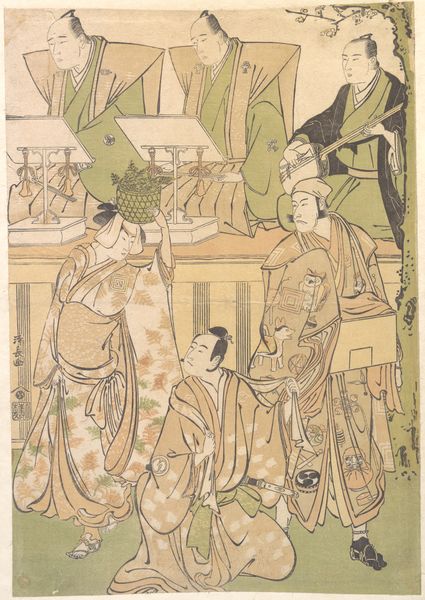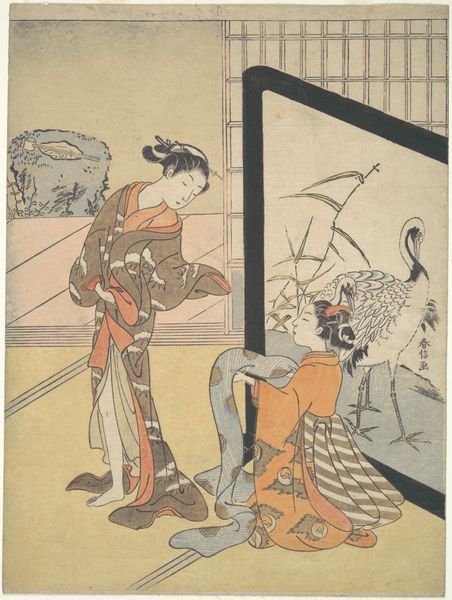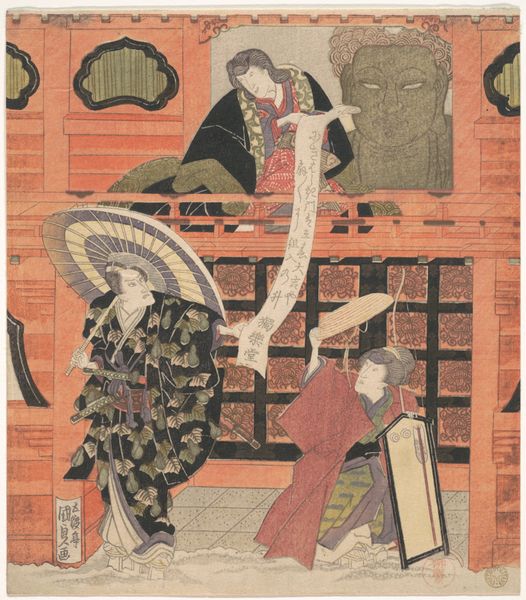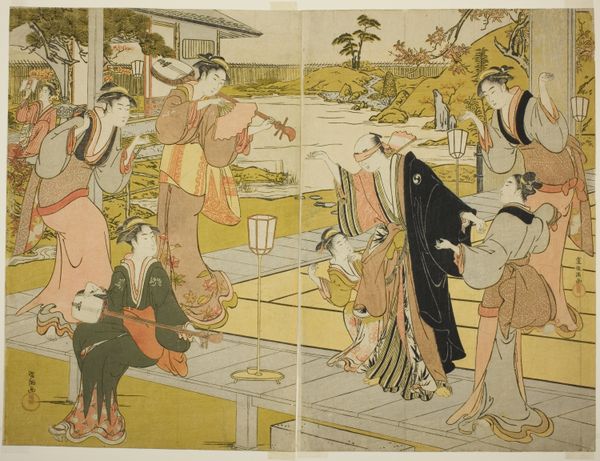
The Actors Nakamura Riko I as Tanbaya Otsuma and Ichikawa Yaozo III as Furuteya Hachirobei, in the joruri "Sakamachi Yoi no Yotsutsuji," performed at the Nakamura Theater in the third month, 1785 1785
print, woodblock-print
asian-art
landscape
caricature
ukiyo-e
japan
woodblock-print
history-painting
Dimensions: 38.5 × 25.9 cm
Copyright: Public Domain
Editor: We're looking at "The Actors Nakamura Riko I as Tanbaya Otsuma and Ichikawa Yaozo III as Furuteya Hachirobei," a woodblock print made by Torii Kiyonaga in 1785. What strikes me immediately is the almost stage-like composition and the stylized gestures of the figures. What can you tell us about its cultural context? Curator: This ukiyo-e print captures actors in a specific performance, “Sakamachi Yoi no Yotsutsuji.” Consider its public function. Prints like these weren’t just art; they were promotional material. The Nakamura Theater would have sold these prints to advertise their plays, and further publicize actors. Think about how these images helped to shape the public perception and popularity of actors like Nakamura Riko I and Ichikawa Yaozo III. Editor: So, it’s less about the artwork itself and more about its role in a larger performance, so it reflects how celebrity culture or advertisements worked then? Curator: Exactly! And the idealized representation of the actors is key. Look at their elegant poses and the careful depiction of their costumes. How do those details convey social status or artistic expression? It also speaks to a broader relationship with art patrons; did the samurai and wealthy merchant classes of the Edo Period influence subject and design, or was it based purely on the market audience? Editor: I see your point. These prints were clearly a product of, and a contribution to, the very vibrant culture they depicted. I hadn't thought about the museum, so to speak, as having been within the theater itself. Curator: Right. So next time you see such images, think, how did their creators use these images as an engagement within, and shaping of, public culture and artistic creation?
Comments
No comments
Be the first to comment and join the conversation on the ultimate creative platform.
